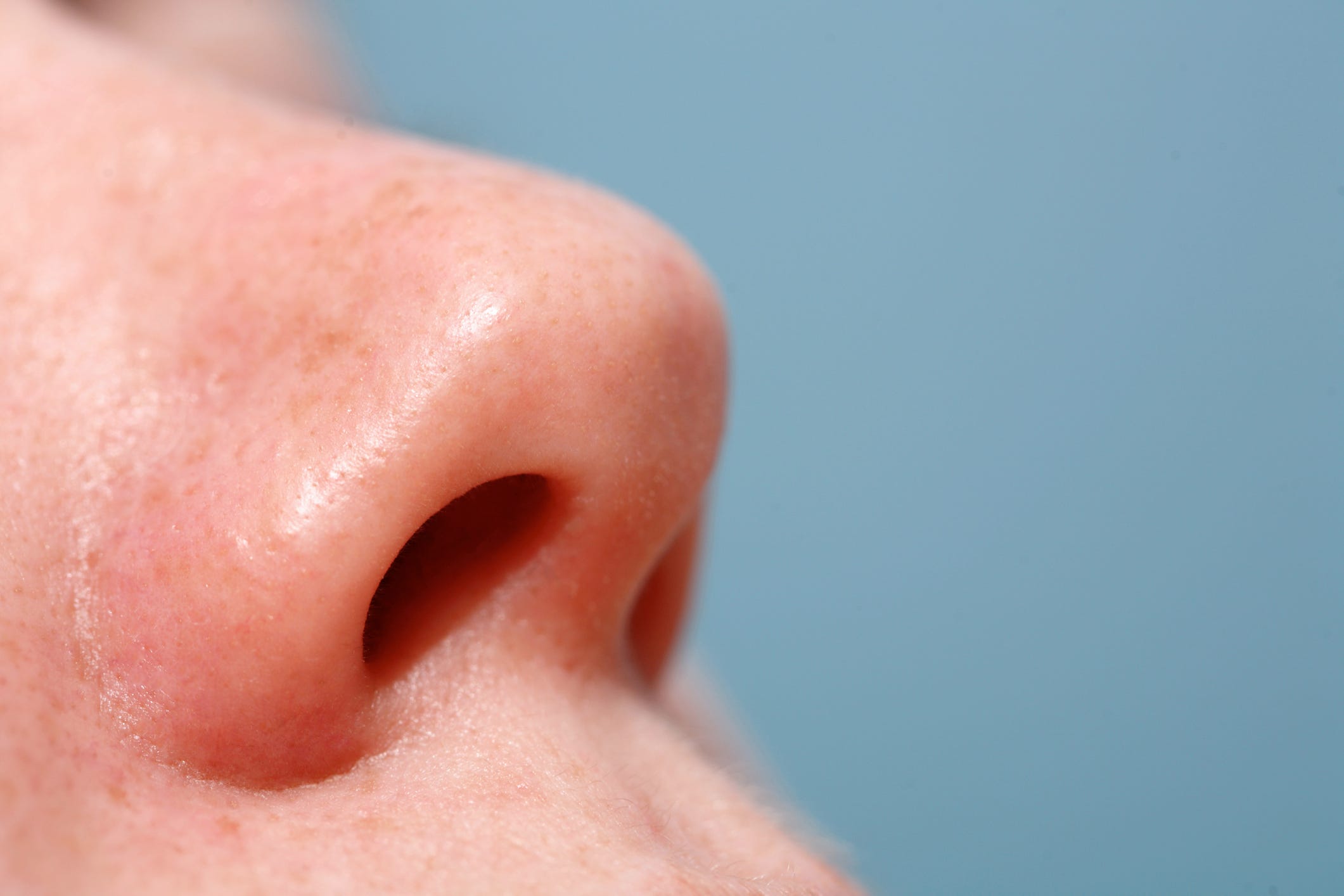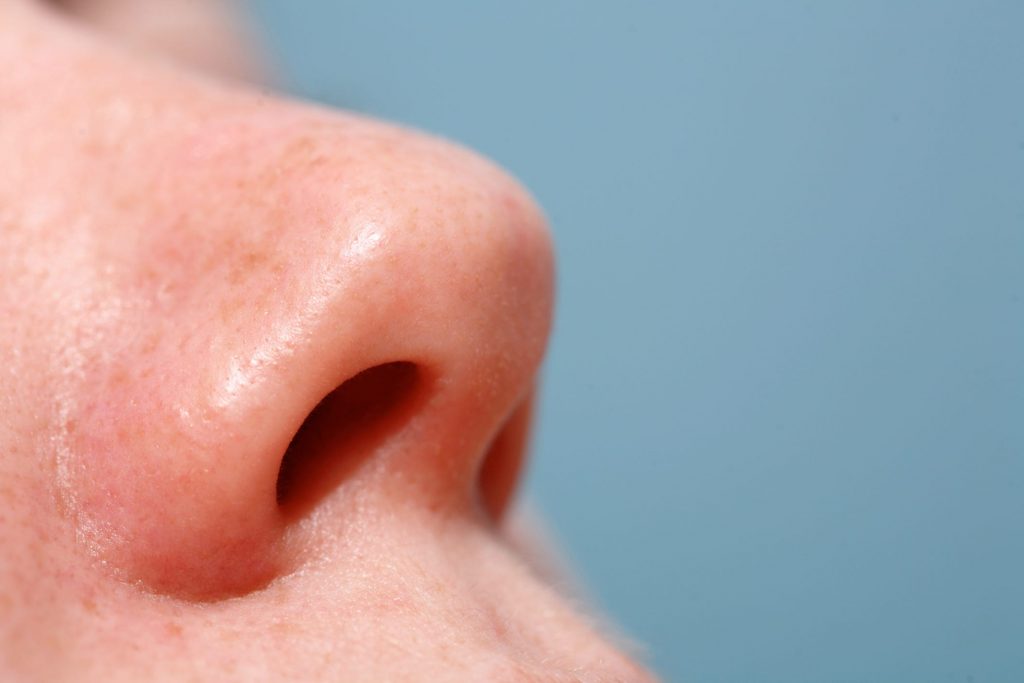
Julian Ward/Getty Images
- A pimple in your nose can be treated by keeping the skin clean and using salicylic acid.
- But a bump in your nose isn't always a pimple – it could be an ingrown hair or a cold sore.
- Nasal furuncles and nasal vestibulitis are infections that may also cause nose bumps.
- Visit Insider's Health Reference library for more advice.
Getting a zit on your face is always irritating, and a pimple that pops up inside your nose can be especially uncomfortable, or even painful.
Pimples inside your nose may just be standard acne, but they may also be a sign of something more serious, like an infection.
If your pimple is standard acne, the best treatment is to keep the skin clean and use products like salicylic acid.
Here are four conditions that can cause pimples in your nose, and how to treat each one.
1. Ingrown hair
Ingrown hairs develop when a hair curls around and grows back into your skin. This can cause a mild infection in your hair follicle that looks a lot like a pimple.
"In the nose, this may happen if hairs are shaved or plucked and do not grow back the way that they should," says Joshua Zeichner, MD, a board-certified dermatologist and professor at Mount Sinai.
A few signs that you may have an ingrown hair in your nose are:
- You can feel a small, rounded bump inside your nostril
- You have a small whitehead-like bump filled with pus
- Itching
- Pain
There are several treatments you can try to loosen the hair from your skin and reduce irritation.
- Use a warm compress: You can make a warm compress by following these steps:
- Soak the corner of a washcloth with hot water.
- Hold it to the affected area for 15 to 20 minutes at a time.
- Repeat this three times per day.
- If the bump is in an easily-reachable part of your nose, you can try to remove the ingrown hair. To do this:
- Sterilize a needle and a pair of tweezers with antiseptic fluid.
- Use the needle to pierce the bump and loosen the hair.
- Use the tweezers to remove the hair.
To prevent ingrown hairs, cut your nose hair with cuticle scissors or a specialized nose hair trimmer rather than waxing or plucking.
2. Nasal furuncles
Similar to ingrown hairs, furuncles are caused by an infected hair follicle, Zeichner says. However, furuncles - aka boils - are more severe than ingrown hairs because the infection is more likely to spread.
You may have nasal furuncles if:
- The skin inside your nose develops a small, tender bump.
- The bump may be further inside your nose, beyond the nostril opening.
- The bump grows larger and fills with yellowish pus.
- The bump ruptures and drains clear liquid.
"This is a particularly dangerous spot for an infection because of its close proximity to the brain," Zeichner says. If the infection spreads toward your brain, it can cause a life-threatening condition called cavernous sinus thrombosis. This condition is extremely rare, affecting around one in 100,000 people per year.
If you think you have a nasal furuncle, you'll need to see your doctor for treatment. Your doctor may prescribe an oral antibiotic and a prescription antibiotic cream like mupirocin.
Along with the antibiotics, you can use a warm compress three times per day to help the bump drain.
3. Nasal vestibulitis
Nasal vestibulitis occurs when you get a small infection at the opening of your nostril. These infections are often caused by Staphylococcus bacteria, which can get into your skin when you pick your nose or blow your nose too often.
Some common symptoms of nasal vestibulitis are:
- Tender bumps around the base of your nose hairs
- Yellowish crusts around the opening of your nostrils
- Minor bleeding when the crusts peel off
You may be able to treat nasal vestibulitis at home using warm compresses and an over-the-counter antibiotic ointment like bacitracin. If this doesn't help your symptoms after a few days, you may need to see your doctor for prescription-strength ointment or oral antibiotics.
4. Cold sore
Cold sores are caused by the herpes simplex virus, which is a very common, lifelong infection. They most often show up on your lips, but they can also form inside your nose.
A cold sore outbreak can cause:
- A tingling or burning feeling inside your nose before the cold sore forms
- A painful blister that drains pus
- Itchiness
- Fever
- Body aches
To soothe the symptoms of a nasal cold sore, you can try at-home treatments including:
- Wrap ice in a thin washcloth and hold it on the cold sore for 15 to 20 minutes
- Apply aloe vera gel to the affected area
- Take a non-steroidal anti-inflammatory drug like Tylenol
If you get cold sores often, your doctor can prescribe antiviral medications like Valacyclovir (Valtrex) and Acyclovir (Zovirax).
Insider's takeaway
In some cases, a pimple inside your nose isn't actually a pimple - it may be an infected hair follicle or a symptom of the herpes virus. There are many ways to soothe the irritation in your nose, including at-home remedies like warm compresses.
It's important to treat nose pimples because, in rare cases, a nasal infection can spread to your brain and become deadly.
"If you have a painful bump in the nose and over-the-counter antibiotic ointments are not helping, make sure to visit a board-certified dermatologist for professional help right away," Zeichner says.
